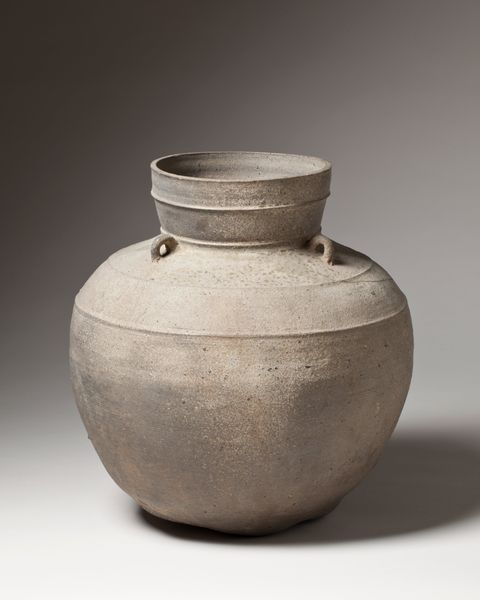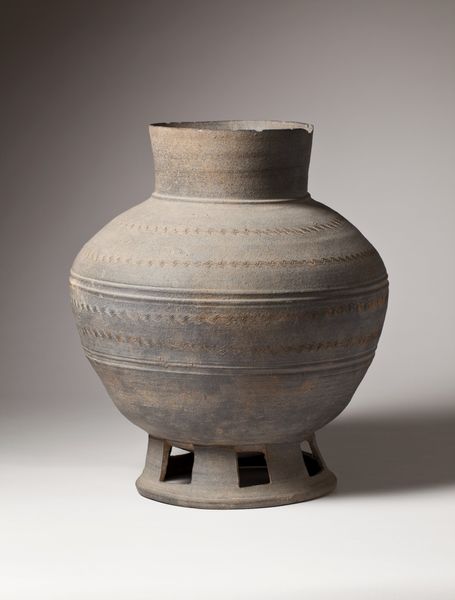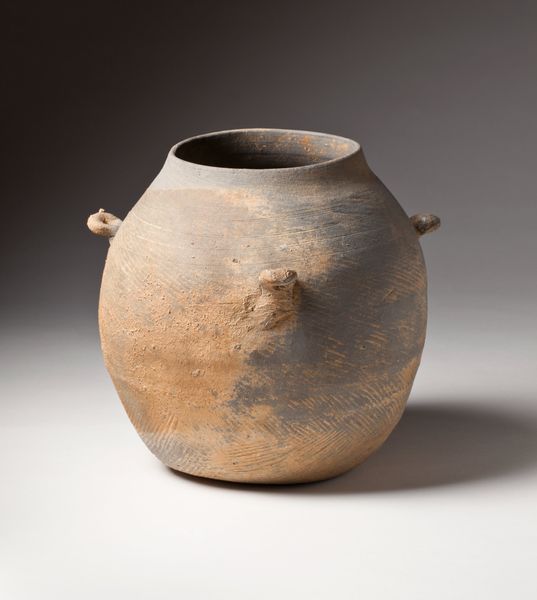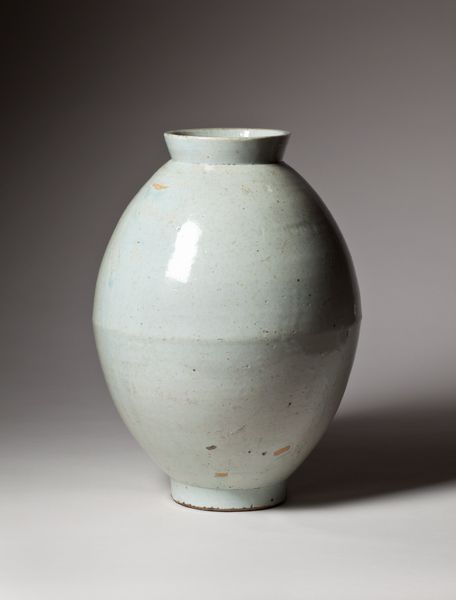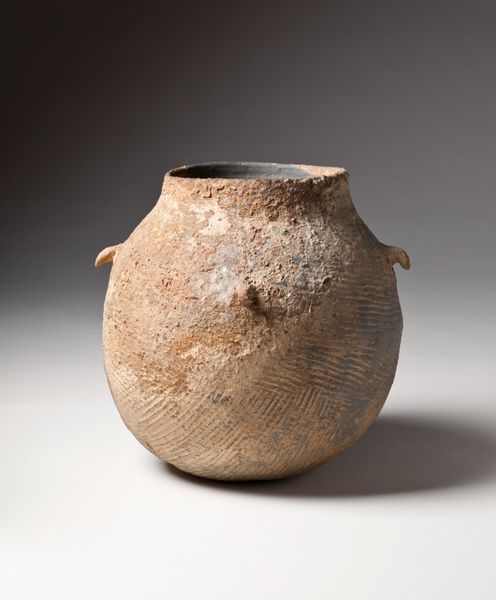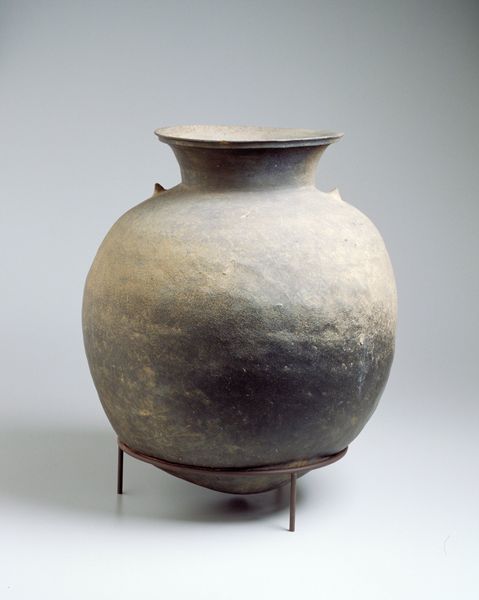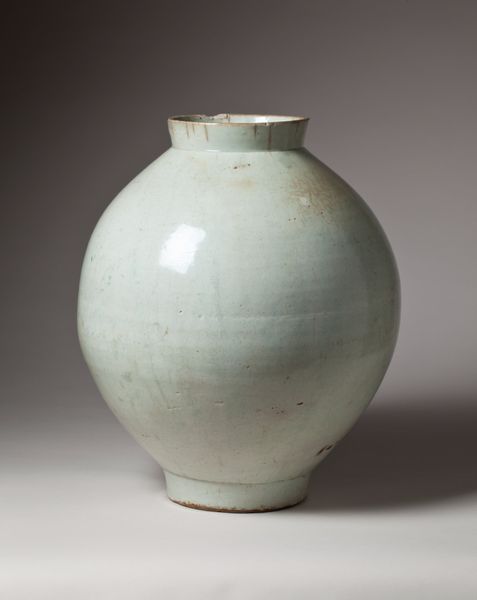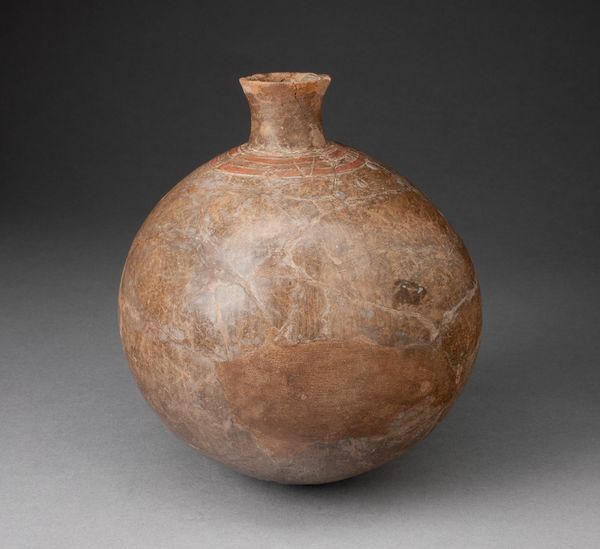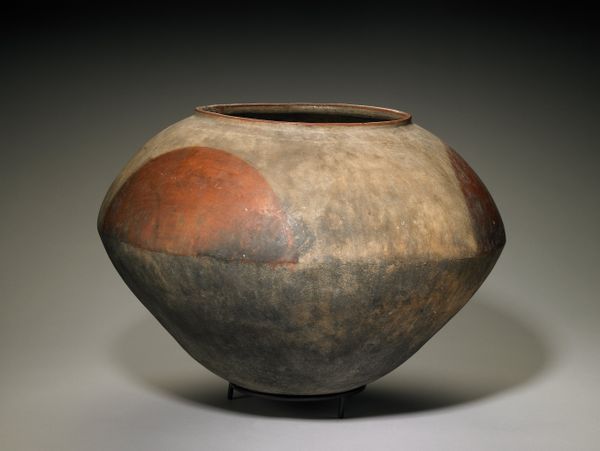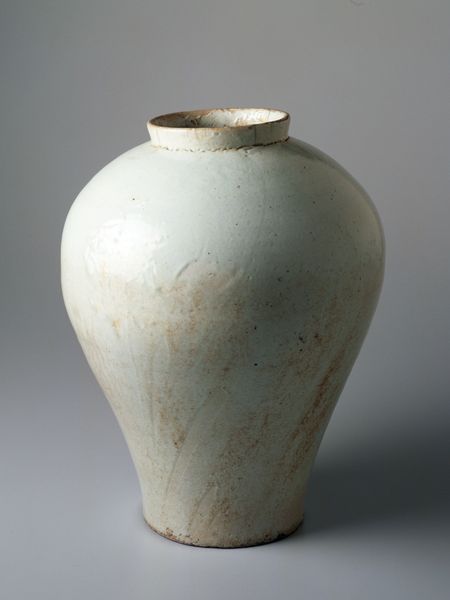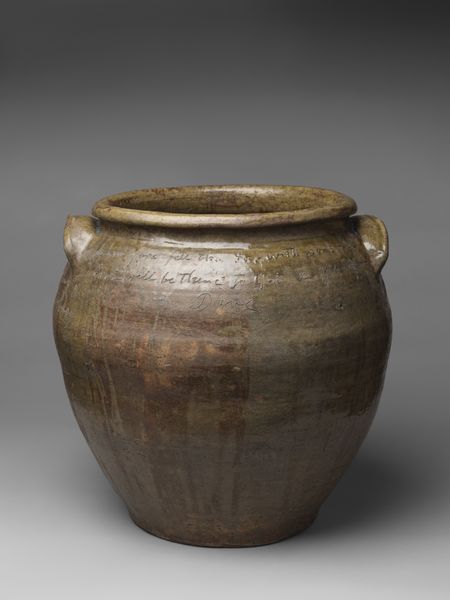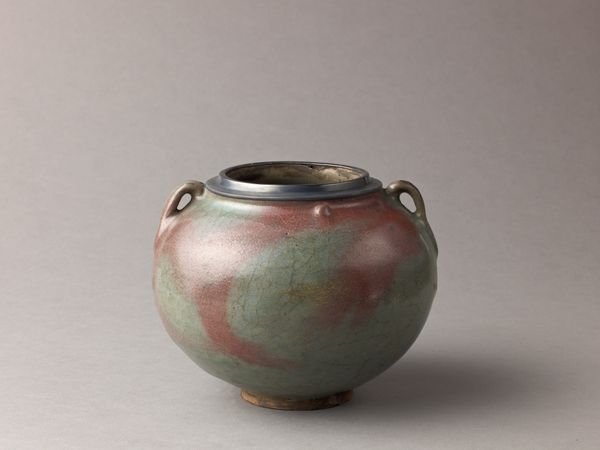
ceramic, sculpture
#
ceramic
#
form
#
ancient-mediterranean
#
sculpture
#
ceramic
Dimensions: 7 5/16 × 7 3/4 × 7 3/4 in. (18.57 × 19.69 × 19.69 cm)
Copyright: Public Domain
Curator: Let’s discuss this striking ceramic jar, which archeologists date to the late 5th to early 6th century. Editor: The simplicity is what immediately grabs me. It feels somehow monumental, despite presumably being of manageable size. The monochrome, earthy palette only intensifies that quiet power. Curator: Indeed, though we don’t know its precise function, it undoubtedly served an important role. Pottery like this speaks to the everyday life and rituals of people long past. This jar whispers stories of utility and continuity. Editor: I’m interested in how the slight irregularities enhance the piece, too. Notice the asymmetry, that shadowy mottling, and the hand-worked texture; this keeps the eye constantly moving and reveals the artist’s touch. It rejects perfection and embraces process. Curator: It’s fascinating to consider what the discoloration might signify, perhaps evidence of its use or even intentional markings with symbolic meaning related to agriculture or domestic life. Its presence implies a dialogue across centuries. Editor: The vessel’s pleasingly plump curvature contributes to that sense of ancient purpose, its circular form a recurring visual motif that signifies continuity, cycles, and wholeness. This visual grammar emphasizes function. Curator: Such a plain jar reflects so much, prompting questions about societal values and the individual who shaped it. What was considered precious enough to be preserved in its time? And how does that reflect back on our contemporary valuations? Editor: Examining its restrained palette and focusing on its very tactile nature encourages us to consider what gets lost when function becomes secondary to adornment, what elemental connections this society may have cherished which ours perhaps now overlooks. Curator: It really demonstrates that the most understated object can become an evocative link to lost civilizations and the narratives they contained. Editor: For me, it underscores the evocative capacity of pure form to transcend time, connecting us with rudimentary human drives: to make, to contain, to remember.
Comments
No comments
Be the first to comment and join the conversation on the ultimate creative platform.
